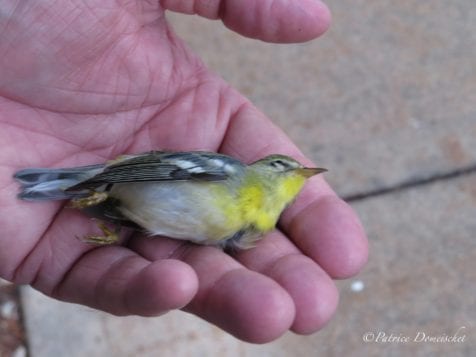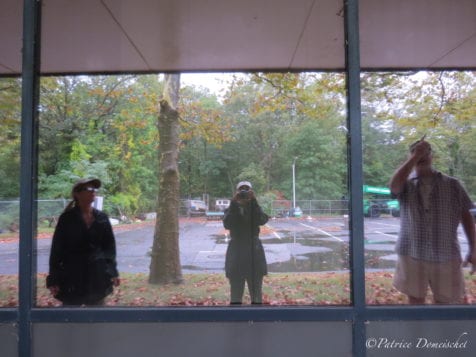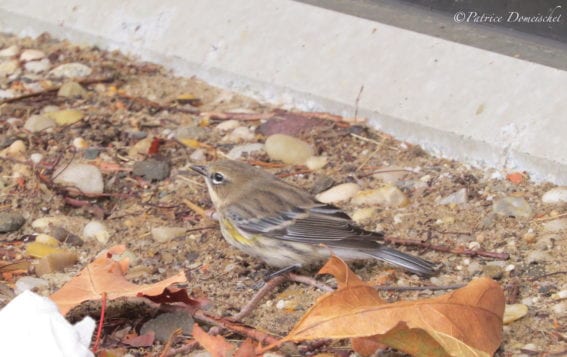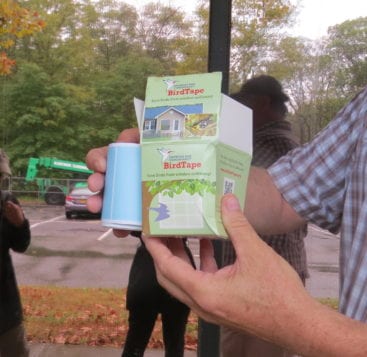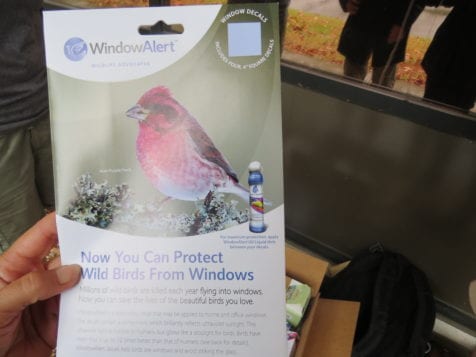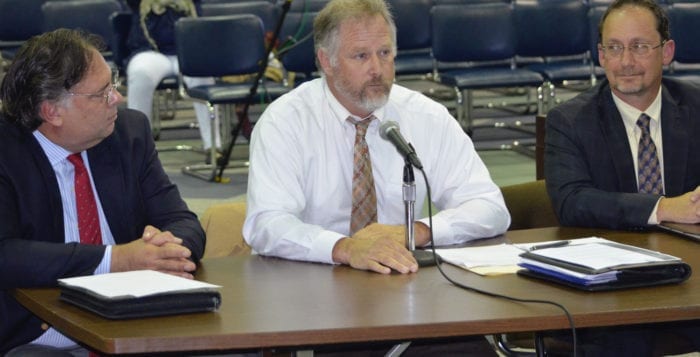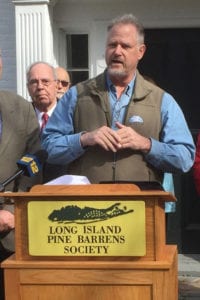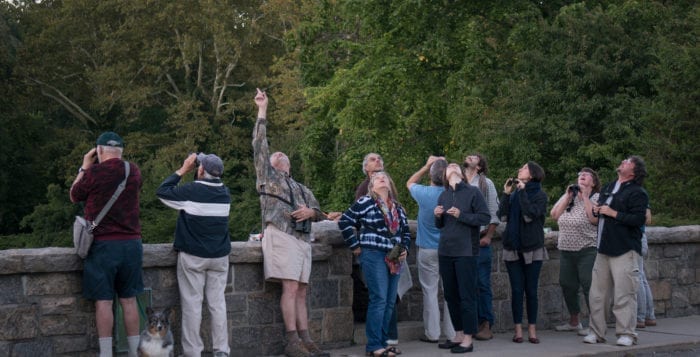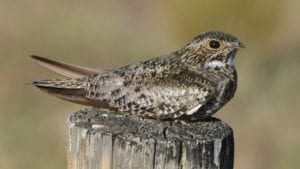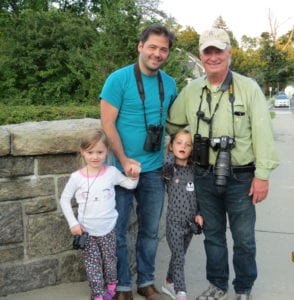By Patrice Domeischel
Our local Audubon chapter, Four Harbors Audubon Society, is on a mission — to eliminate, or at least drastically reduce, bird mortality at Stony Brook University. We recently learned of a severe window-strike problem at two of its campuses. Of special concern is the South Campus, consisting of a cluster of interconnected buildings, each one-story tall, and covered in mirrored windows.
Window collisions are a prime cause of bird fatalities (second only to falling prey to cats), causing anywhere from 365 to 988 million deaths per year in the United States. Collisions are most apparent to us during migration but occur all year. A 2014 window-strike study published by the American Ornithological Society indicates that the greatest total number of bird collisions in the United States occurs with residential (one to three stories tall) and low-rise (four to 11 stories tall) buildings, not skyscrapers (over 12 stories) as one might expect.
A South Campus walk to determine the severity of the strike problem, conducted by Four Harbors Conservation Chair John Turner, revealed numerous bird mortalities and some stunned birds, including species such as the American redstart, Canada warbler, black-and-white warbler, Swainson’s thrush, common yellowthroat, gray catbird, common grackle, dark-eyed junco and American robin. A total of 20 dead and stunned birds were found during one visit, and more during two subsequent visits. Turner found the mirrored windows to be particularly dangerous for birds as their highly reflective quality appeared to be a continuation of the nearby landscape. Mortality at these buildings far exceeded the national average for buildings of low height.
A proposal to embark on a project to address the problem was brought to the Four Harbors board, voted upon and approved. Research into the most effective and least costly way to address the window strikes at SBU resulted in a plan to affix ultraviolet decals to as many of the South and Main Campus windows as possible, emphasizing the worst strike areas. Our goal is the elimination, or at least a sharp reduction, in the incidence of bird window strikes occurring at the university.
Why window decals?
These small 4-by-4-inch stickers reflect ultraviolet light, invisible to us, but appearing as a bright, glowing area to birds. The decal alerts birds to the presence of an obstacle, causing them to redirect their flight pattern and get out of harm’s way. Four Harbors used Window Alert* decals, but there are many other brands and styles of decal on the market, and additional deterrent choices, such as window tape and netting, to choose from. The most effective solution on already-existing windows, but also most expensive, is to erect netting. Prior to Four Harbors involvement, a concerned individual employed this solution on a particularly lethal wall of windows with 100 percent effectiveness. For our chapter, though, window decals seemed the next best thing.
Getting the job done
In October 2017, after obtaining the necessary permit from the university, Four Harbors board members and volunteers spent two days affixing over 1,200 ultraviolet window decals and dabbing ultraviolet liquid on windows of all 11 buildings comprising the South Campus, including the worst culprit, Rockland Hall, where the highest number of strikes had occurred.
As we applied the stickers, additional birds were discovered, including Philadelphia vireo, Tennessee warbler, northern waterthrush, swamp sparrow, northern parula warbler and Swainson’s thrush, and, to our dismay, two yellow-rumped warblers hit as we were applying the decals. Fortunately, one of these two seemed to sustain no injury and after some rest was soon able to fly off.
I think we all felt a bit exhausted afterward, but elated also, knowing that there had been a positive effort to eliminate window strikes at the university. Next on the Four Harbors agenda are plans to continue with the project at the Main Campus.
Prevention is key
Many of you have wondered what you can do to assist and protect birds in this hazardous world. Each day, birds must contend with numerous obstacles: predation, hazardous weather conditions and hunger and starvation. Window strikes are an additional deadly threat, but one that we can do something about. By employing this simple and easy window-strike solution at your own home, you can do your part to make life for our birds a safer one.
Our thanks to Tom Lanzilotta, SUNY, Stony Brook, for acting as our director; Financial Services for Facilities & Administration, SUNY, Stony Brook, for granting permission for this project; to Carl Safina, for alerting us to the problem; and to the Safina Center and Seatuck Environmental Association for their generous donations to cover the partial cost of the decals.
*Four Harbors Audubon Society does not endorse any brand of window-strike deterrent on the market. See the following websites for additional information on window-strike prevention:
▶https://www.birdwatchersdigest.com/bwdsite/learn/top10/ windowstrikes.php
▶https://www.allaboutbirds.org/why-birds-hit-windows-and-how-you-can-help-prevent-it/
▶https://www.collidescape.org/
▶https://www.duncraft.com/
All photos by Patrice Domeischel

